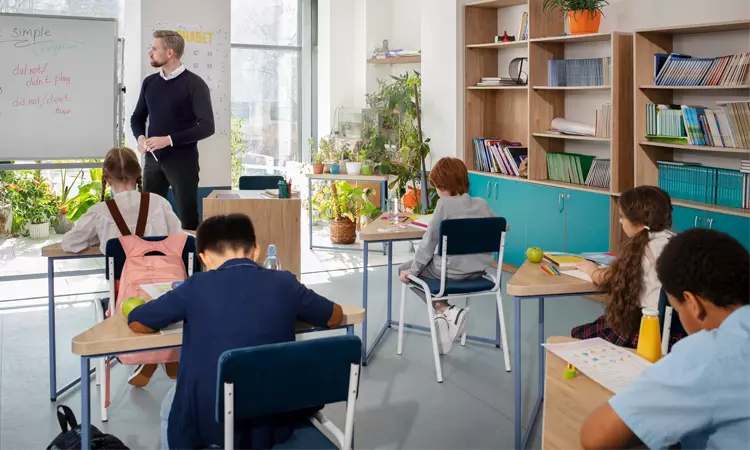Closing Classroom Windows Can’t Stop Pollution—Here’s How HibouAir Makes a Difference
A recent study by Imperial College London has confirmed a concerning truth: closing classroom windows does not stop outdoor air pollution from entering schools. Conducted under the SAMHE (Schools’ Air quality Monitoring for Health and Education) project, the study monitored nearly 500 classrooms across the UK and revealed that outdoor air pollution is the primary contributor to indoor air quality issues in schools.
On 6% of the school days, outdoor particle pollution exceeded World Health Organization (WHO) daily guidelines—and these high-pollution days were responsible for a striking 17% of the total indoor pollution exposure over the year (WHO guidelines).
More Ventilation? Not the Solution Alone
Some schools try to address air quality concerns by reducing ventilation on polluted days. However, Dr Alice Handy of the SAMHE team explains that “reducing ventilation will not stop outdoor PM2.5 from entering classrooms.” Even during weekends when schools were closed, pollution levels remained high inside classrooms, especially around events like fireworks night (Dr. Handy’s publication profile).
Moreover, good ventilation is critical for keeping CO₂ levels low, which plays a key role in improving concentration and reducing the risk of airborne infections among students.
HibouAir: Real-Time Insights for Better Air
These findings underscore the urgent need for reliable, real-time air quality monitoring inside classrooms. That’s exactly where HibouAir makes a difference.
HibouAir offers a compact, plug-and-play air quality monitor that continuously tracks: PM1.0 / PM2.5 / PM10, CO₂ and VOCs, Temperature, humidity, and pressure, Noise levels.
This enables schools to respond in real time, adjusting ventilation, purifiers, or class schedules based on current air quality conditions—rather than assumptions.
Sensors and Filters: A Smart Combination
In the same SAMHE study, air filters were tested in an additional 300 classrooms. The result? A 29% reduction in particle pollution compared with nearby schools without filters (poster report).
However, Dr Samuel Wood of the research team noted that even with filters, “outdoor air quality was still the leading driver of classroom pollution” (Dr. Wood’s profile). Filters helped, but without real-time monitoring, schools remain unaware of when air quality actually improves or worsens.
HibouAir bridges this gap by providing data that validates the effectiveness of purification systems and alerts staff during high-risk periods.
Protecting Students Beyond the Classroom
Children are exposed to pollutants not just at school, but also at home—from sources like cooking with gas, personal care products, wood burners, and cigarettes. Research also shows that the journey to school can expose children to more traffic-related pollution than they encounter indoors (ScienceDirect article).
These findings further highlight the value of evidence-based school policies, such as no-idling zones, “school streets,” and fossil fuel reduction efforts.
Take Action: Monitor and Improve
HibouAir helps schools with the real-time data they need to take proactive and informed action. By setting customizable thresholds, schools can receive instant alerts when pollution levels exceed safe limits, ensuring timely responses to protect students and staff. The system also allows for direct comparison between indoor and outdoor air quality, offering valuable insight into how well school buildings shield against external pollutants. With this data, administrators can optimize the use of air purifiers and ventilation systems more effectively, adjusting them based on actual conditions rather than assumptions. Furthermore, HibouAir enables schools to evaluate the impact of sustainability initiatives—such as green infrastructure or reduced traffic zones—by providing measurable evidence of their effectiveness in improving air quality.
Without reliable monitoring, schools are navigating air quality blindly. HibouAir makes that data visible, actionable, and easy to understand.
The classroom should be a space for learning and health—not hidden exposure. As the SAMHE study confirms, pollution isn’t just an outdoor problem, and closing the windows is not the fix.
With HibouAir, schools gain the insight they need to create healthier, more focused learning environments. Let’s build a future where every school knows the air their students are breathing.
Sources:

